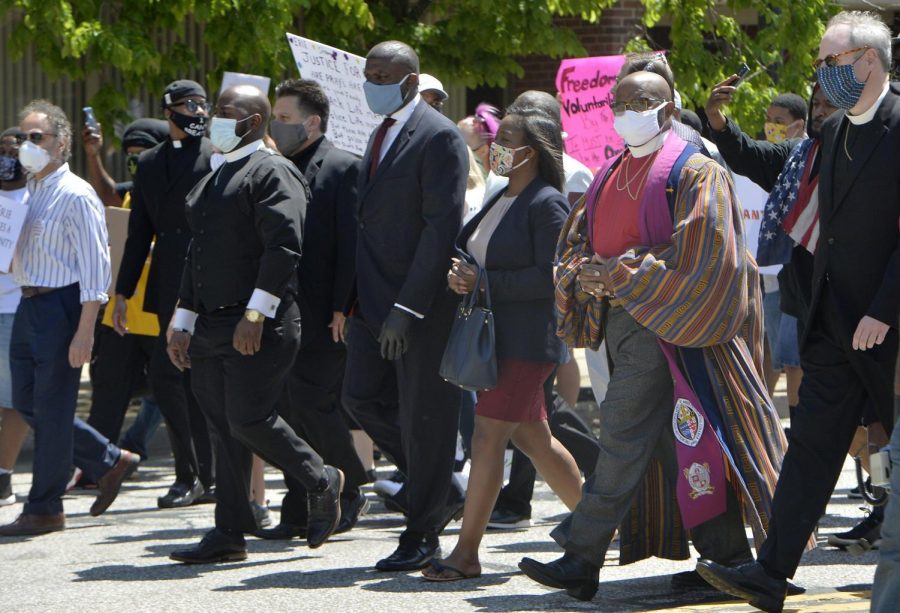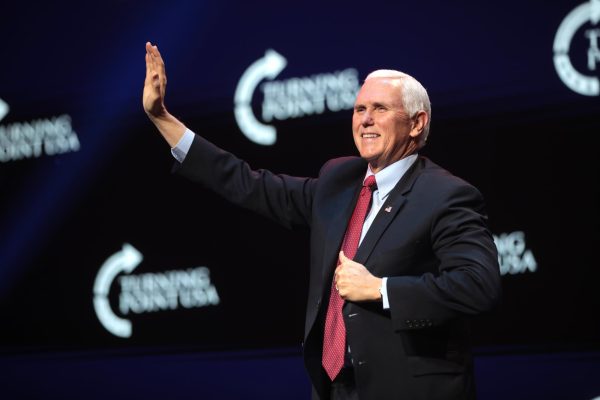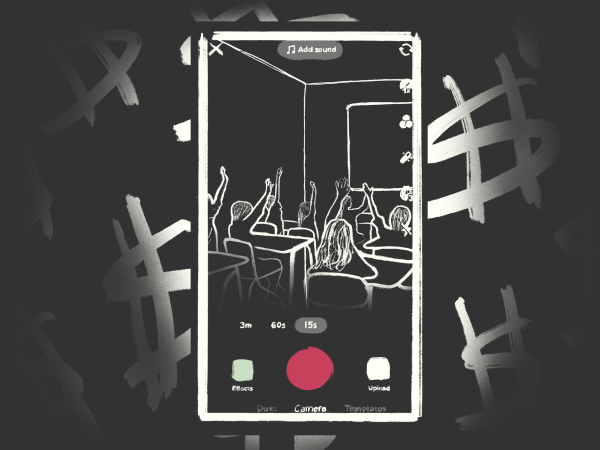The coronavirus will have a second wave
Tribune News Service
Community leaders and clergy members march north on State Street on June 6, 2020, in Erie. More than 2,000 people marched from 11th and State streets to Perry Square to protest the killing of George Floyd on Memorial Day in Minneapolis. ([GREG WOHLFORD/ERIE TIMES-NEWS)
On May 25, George Floyd, a Black 48-year-old man, was killed by a White police officer, Derek Chauvin. Floyd was handcuffed and forced to lie facedown in the street. Chauvin placed his knee on the back of the man’s neck for nearly nine minutes, all whilst Floyd called out for his mother. He told officers that he was going to die and begged for them to remove the knee from his neck. His autopsy ruled his death as a homicide. All four officers were fired, and protests against police racism and brutality began across the country.
Now tens of thousands of people are out in the streets protesting. Obviously, it is the right of the American people to protest, and in the name of such violent injustice, protesting is more than certainly justified. Beneath the conflict, there is a lingering beast that has conveniently been forgotten about.
On April 3, George Floyd tested positive for SARS-CoV-2, the virus that causes Coronavirus (COVID-19).
Amen Ogbongbemiga, an Oklahoma State football player, tweeted that he had tested positive for the COVID-19 virus after attending a protest, despite the fact that he had taken necessary precautions. Similar reports have emerged across the country.
“Just about every person there other than small children and the occasional person had a mask on which I think showed responsibility in the community,” said Cat Presnell, an North Carolina resident and Caldwell Community College student. Presnell was just one of the hundreds in Boone who were a part of the peaceful protest on May 31.
One of the main objectives of locking the nation down in response to the virus was to prevent massive public gatherings that would serve as easy transmission fields. With three funerals over the course of five days planned for Floyd in addition to widespread protests, the virus running rampant seems to be a rather terrifying hazard.
Thousands of people screaming together in close proximity is a sure way for it to spread, even though many of the protesters have been urged to wear masks and gloves.
Spikes are already an issue following the reopening of the country in addition to people flowing out for Memorial day weekend, so the protests will only increase the numbers. CNN has reported that 18 states have already reported at least a 10% increase in cases.
MotherJones reported that police have used measures such as tear gas and pepper spray to control the protest crowds. Seeing how tear gas and pepper spray have a terrible impact on the lungs by themselves, the combination of the respiratory damage caused by the virus could be dreadful or even cause a greater risk for contagion.
according to Buzzfeed, many protesters have even been arrested. Over 11,000 people have been taken to jail as of June 2.
Most prisons or jails do not exactly have “social distancing” implemented.
“You can’t control who you’re interacting with,” said Jack Beck, former director of the Prison Visiting Project at the Correctional Association of New York, in an interview with Salon about social distancing in prison. And people are “herded into meal halls where they sit where someone else ate 15 minutes ago. But that area hasn’t been sterilized.”
With over 11,000 people being arrested due to protests, the COVID-19 virus is spreading rampantly through jails and prisons seems extremely likely.
“We’re going to see a spike in COVID-19. It’s inevitable,” said Minnesota Governor Tim Walz about the protests.
Muriel Bowser, the mayor of Washington, D.C. expressed similar worries, saying, “I’m concerned that we had mass gatherings on our streets when we just lifted a stay-at-home order and what that could mean for spikes in coronavirus cases later.”
Despite major media outlets no longer paying much attention to the disease, it is still widespread and just as much as a threat.
“[The coronavirus] was mostly at the back of my mind,” said Esme Rivera after attending a protest in Charlotte, North Carolina. “Most people had masks, there were some that didn’t. There were actually people handing out masks to people who didn’t have them, but social distancing didn’t exist at all.”
It goes to show how much power the media seems to have over the lives of the American people. It was not too long ago that going out into public or holding gatherings would lead to one being condemned as a bad person. But as attention has shifted away from the virus, leaving to go support the protests is widely considered the noble thing to do.









William • Jun 19, 2020 at 7:40 pm
In response to the other person, there’s no article about that because it’s harder to take people protesting about not being able to get a haircut seriously. Why would we? There werent many people protesting so a second wave wouldn’t be as big of a deal. At least these protests are necessary.
keisha • Jun 18, 2020 at 2:23 pm
Sorry, but what was the point of this article? Where was the SAME energy when r*dnecks were out ehre protesting to get a flipping haircut with rifles? Y’all don’t like seeing POC unite for justice and it SHOWS. Yes there might be a second wave, but not everyone can stay in their houses for 3-4 more months lacking any social interaction. Y’all don’t even think about that psychologically. Miss me with the BS. Everyone might as well get the virus during the “second wave” and adapt to it since it is part of the New World Order :/
someone • Jun 17, 2020 at 3:13 am
Nice article. Would be better if you excluded certain words such as “obviously” as it makes your statement look weak. Maybe use more transitional words so each sentences can go with the flow.